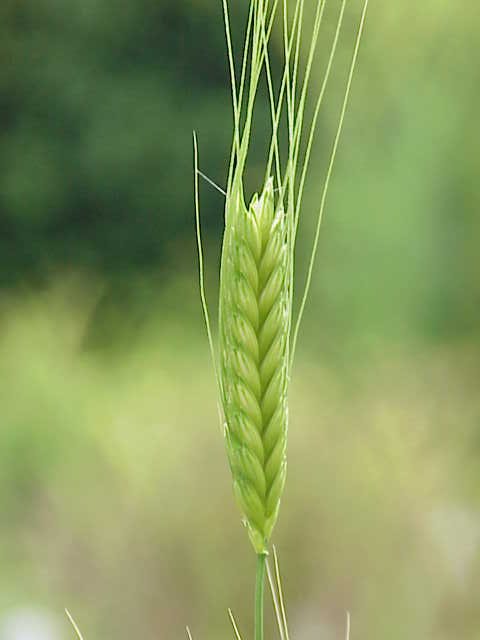Baking and Pastry
- Bake Bread Basics
- Pastries And Pies
- 4.1Basics of pastry making
- 4.2Types of pastry: Shortcrust, Puff & Filo
- 4.3Making Quiche and Tarts
- 4.4Making Sweet Pies (Apple pie)
- 4.5Making Savory pies (Chicken pot pie)
- 4.6Making Choux pastry & Cream puffs
- 4.7Making Éclairs and Profiteroles
- 4.8Specialty Pastry: Mille Feuille
- 4.9Flaky Pie Crusts: Tips and Techniques
- 4.10Creative Pie Decoration Techniques
- Cakes & Cupcakes
- Cookies & Small Bites
- 10.1Cookie Baking Basics
- 10.2Classic Almond Biscotti
- 10.3Making Chocolate Chip Cookies
- 10.4Nutty Walnut Cookies
- 10.5Making Sugar Cookies and Decorating with Royal Icing
- 10.6Making Macarons
- 10.7Making Petit Fours
- 10.8Specialty Cookies: French Madeleines
- 10.9Specialty Cookies: Italian Amaretti
- 10.10Packaging & Presentation of Cookies and Small Bites
Bake Bread Basics
Mastering Gluten-Free Bread: Techniques and Recipes

Diet that excludes gluten.
Baking gluten-free bread can be a daunting task, especially for beginners. However, with the right knowledge and techniques, you can create delicious, fluffy, and satisfying gluten-free bread at home. This article will guide you through understanding gluten-free flours, techniques for making gluten-free bread, and provide you with some tried-and-true recipes.
Understanding Gluten-Free Flours
Gluten is a protein found in wheat, barley, and rye. It gives bread its structure and elasticity. When baking gluten-free, we need to find alternatives that can mimic these properties. Here are some commonly used gluten-free flours:
-
Rice Flour: This is a staple in gluten-free baking. It's light and easy to digest, but it doesn't provide much structure, so it's often mixed with other flours.
-
Almond Flour: High in protein and moisture, almond flour can add richness and tenderness to your bread. However, it's also heavy, so it's usually used in combination with other flours.
-
Buckwheat Flour: Despite its name, buckwheat is not related to wheat and is completely gluten-free. It has a strong, nutty flavor and is great for adding structure to your bread.
-
Tapioca Flour: This flour is made from the root of the cassava plant. It's a great thickener and adds chewiness to your bread.
-
Sorghum Flour: Sorghum flour is high in fiber and has a mild flavor. It's great for adding structure and texture to your bread.
Techniques for Making Gluten-Free Bread
Gluten-free bread baking requires some different techniques than traditional bread baking. Here are some tips to get you started:
-
Use a Blend of Flours: As mentioned above, each gluten-free flour has its strengths and weaknesses. By using a blend, you can get the best of each and create a balanced flavor and texture.
-
Hydrate Your Dough: Gluten-free flours tend to absorb more liquid than wheat flour. Make sure your dough is well hydrated to prevent it from being too dry.
-
Use a Binder: Since there's no gluten to hold everything together, you'll need to add a binder like xanthan gum or psyllium husk powder.
-
Let it Rise Longer: Gluten-free breads often need a longer rise time to achieve a good texture. Be patient and let your dough rise until it's almost doubled in size.
Gluten-Free Bread Recipes
Now that you understand the basics, it's time to start baking! Here are two simple recipes to get you started:
Basic Gluten-Free Bread
Ingredients:
- 1 cup brown rice flour
- 1 cup sorghum flour
- 1/2 cup tapioca flour
- 1/2 cup potato starch
- 1 tablespoon xanthan gum
- 1 teaspoon salt
- 1 tablespoon active dry yeast
- 1 1/4 cups warm water
- 3 tablespoons vegetable oil
- 2 tablespoons honey
- 2 eggs
Instructions:
- In a large bowl, combine the flours, potato starch, xanthan gum, salt, and yeast.
- In a separate bowl, mix together the warm water, oil, honey, and eggs.
- Gradually add the wet ingredients to the dry, mixing well after each addition.
- Once the dough is well mixed, cover the bowl with a towel and let it rise in a warm place for about 1 hour, or until it's almost doubled in size.
- Preheat your oven to 375°F (190°C) and grease a loaf pan.
- Pour the dough into the pan and bake for about 35-40 minutes, or until the top is golden brown and a toothpick inserted into the center comes out clean.
- Let the bread cool in the pan for 10 minutes, then transfer it to a wire rack to cool completely.
Gluten-Free Buckwheat Bread
Ingredients:
- 1 1/2 cups buckwheat flour
- 1/2 cup almond flour
- 1/2 cup tapioca flour
- 1 tablespoon xanthan gum
- 1 teaspoon salt
- 1 tablespoon active dry yeast
- 1 1/4 cups warm water
- 2 tablespoons vegetable oil
- 1 tablespoon honey
- 2 eggs
Instructions:
- Follow the same steps as the basic gluten-free bread, replacing the brown rice flour and sorghum flour with buckwheat and almond flour.
Happy gluten-free baking!